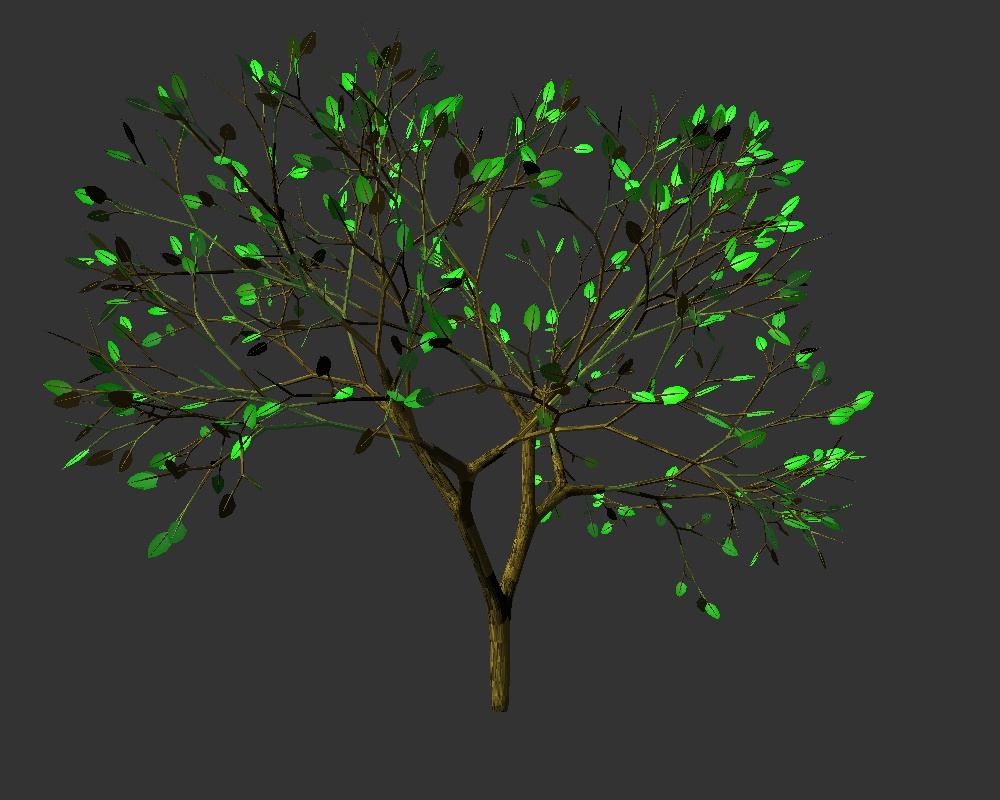
CS354/BME354
Computer Graphics
Lecture: T, Th 9:30AM - 11:00AM
(BURDINE 220)
Course #:
53485(CS)
Computer
Sciences Department
University
of Texas at Austin
Spring 2013
| |
Instructor
|
Instructor's Assistant
|
Teaching Assistant
|
|
Name
|
Chandrajit Bajaj |
Leah Adrian |
Eric (Greg) Daniel |
|
Office
|
ACES 2.324A |
ACES 4.102 |
GDC Basement Lab |
|
E-mail
|
bajaj@cs.utexas.edu |
leah@ices.utexas.edu |
egdaniel@cs.utexas.edu |
|
Phone
|
(512) 471-8870 |
Use Email |
Use Email |
|
Office Hours
|
Tues 1:30pm - 4:00pm, or by email appt.
|
NA |
M 12:30-2pm, TH 3:00 - 4:30pm and by appt.
|
Recommended Book
"Interactive Computer Graphics" by Ed. Angel, Dave Shreiner,
Addison-Wesley, 2012
6th edition.,
Grading
- The four programming assignments, each of equal
weight, have a programming part and a written part. The programming
part
will be graded on correctness (50%), efficiency (20%), programming
style
(15%), and elegance of user interface (10%). In addition, creativity
and
superior rendering effects will be rewarded (5%).
- You are encouraged to do PAIR-programming. Your
chosen partner remains the same throughout the semester. Each PAIR
turns in a single program for grading, however the answers to the
written questions needs to be written up and submitted individually.
- Each programming assignment should be completed
on
time.
To allow for unforeseeable circumstances PAIRS shall be allowed 4/4
days
(4 days for code, 4 days per person for written work) grace
during the semester. The grace shall be given 7/7 days, if you
choose to
program individually. For PAIRS, you can either be late 4 days on one
assignment,
or
3 days on one and one day on another, etc. Beyond this, late
turn-ins
will be penalized a flat 5% of the total 100% per day they are late.
- There are two parts to each Project: a coding
portion that is done in groups (80% of the project grade) and a written
portion that is done individually (20% of the project grade). For
PAIRS, each group has four total grace days to be used on the coding
section of each project. Each person in that group also has four
grace days, accounted for separately (i.e. per person), to be used on
his or her personal written assignments. Students working
individually have 7 late days for code and 7 late days for the written
work. Note that all late days, both group late days (for code)
and personal late days (for the written portion), take effect beginning
on the due date for the Project. You may submit your code before
you submit your written assignment, and vice versa.
- The final grade will be compiled from class (multiple choice) lecture quizzes (12%), the two
midterm exams (10% + 10%), final exam (18%), 4 programming assignments (4 x 10%), 4 written assignments (4 x 2.5%)
CS 354 Course Outline
This course provides a top down and stepwise
refinement
introduction to computer graphics as well as lays the foundation for a
graduate course in computer graphics and data visualization. There is a
choice of both breadth and depth in the intertwined topics of graphic,
computational geometry, geometric modeling and data visualization.
List of Lectures
|
DATE
|
LECTURES
|
ASSIGNMENTS
|
Jan 15
|
Course Syllabus, grading etc. and
Graphics Systems |
|
Jan 17
|
Models, Architecture and Graphics Pipeline
(Supplementary notes)
|
Project 1 Posted |
Jan 22
|
OpenGL and GLUT programming
(Supplementary notes OpenGL 3.x)
(Supplementary notes OpenGL 2.x)
|
Jan 24
|
Interaction
Interactive Programming/Graphical Interfaces OpenGL 3.x + freeglut + GLEW
Interactive Programming/Graphical Interfaces OpenGL 2.x + GLUT
|
Jan 29
|
Object/View Representations: Geometry and Coordinate Systems
(Supplementary notes)
|
Jan 31
|
Viewing Systems I: Transformations
(Supplementary notes)
|
Feb 5
|
Viewing Systems II: 3D Rotations/Orientations
(Supplementary notes)
|
Feb 7
|
Viewing Systems III: Projections, Perspective Mapping
(Supplementary notes)
|
Project 2 Posted |
Feb 12
|
Object Representations I (Fractals,Iterated Systems,L-systems)
(Supplementary notes)
|
Project 1 Due |
Feb 14
|
Object Representations II (Piecewise Polynomial Curves, Surfaces)
(Supplementary notes)
|
Feb 19
|
Object Representations III (Bezier & B-splines)
(Supplementary notes)
|
Feb 21
|
Object Representations III (Rendering Bezier & B-splines)
(Supplementary notes)
|
Practice Midterm 1 (Solutions) |
Feb 26
|
Object Representations IV (Recursive Subdivision, Shapes, Scenes)
(Supplementary notes)
|
Feb 28
|
MIDTERM I -- IN CLASS
(Solutions)
|
Project 3 Posted |
March 5
|
Color, Light, Photorealism
(Supplementary notes)
|
Project 2 Due |
March 7
|
Illumination Models (I): Direct and Local Specular
(Supplementary notes)
|
March 11 - 16
|
Spring break |
March 19
|
Illumination Models (II): Shading
(Supplementary notes)
|
March 21
|
Illumination Models (III): Global View Dependent
(Supplementary notes)
|
March 26
|
Illumination IV: Global Diffuse
(Supplementary notes)
|
| March 28 |
Illumination V: Object & Texturing
(Supplementary notes)
|
April 2
|
Illumination VI: Bumps and Environment Effects
(Supplementary notes)
|
Project 4 Posted |
April 4
|
Image Processing I: Compositions
(Supplementary notes)
| Project 3 Due |
April 9
|
Image Processing II: Image Filtering, Anti-aliasing
(Supplementary notes)
|
Practice Midterm 2 (Solutions)
|
April 11
|
GPU Programming
(Supplementary notes)
|
April 16
|
MIDTERM II -- IN CLASS
(Solutions) |
April 18
|
Visibility Algorithms I: Depth Sort
|
Final study guide |
April 23
|
Visibility Algorithms II:Partitioning Trees
|
April 25
|
Animation I&II: Articulate,Particulate Systems
(Supplementary Notes)
|
Project 4 Due |
April 30
|
Mobile App Programming
|
May 2
|
FINAL EXAM -- IN CLASS
|
|
